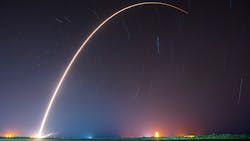Musk Needs More Than Big Rockets to Colonize Mars
SpaceX founder Elon Musk unveiled his vision for “making humans a multiplanetary species” earlier this week. It might be the most ambitious and fraught endeavor ever proposed by man.
Humans have placed robots on the surface of Mars and flown satellites around it, providing high-resolution analysis of its surface and a sense of its geology. But it’ll take more than a decent map to find our way. Despite the phenomenal resources and record Musk brings to the enterprise, there remain a few planet-size holes in his plan.
In short, a lot of things need to be invented before mankind can even make it to Mars — never mind establish a colony.
The most basic component of the complicated mission is the one Musk is in the best position to provide: a heavy-lift rocket. The billionaire’s vision calls for a vehicle capable of launching more than 100 people at a time. SpaceX’s utterly massive Interplanetary Transport System (ITS), unveiled in concept earlier this week, would measure 400 feet nose-to-tail when fully loaded and be powered by 42 of the company’s newly tested Raptor engines.
“The first journey will be very dangerous, and the risk of fatality will be very high,” Musk said. “Are you prepared to die? Then you are a candidate for going.”
Life in zero-g isn’t pleasant. Astronauts lose about 1% of their bone minerals each month; shifting fluids interfere with eyesight; and they’re “likely to experience motion sickness,” according to NASA. The space agency is researching ways to overcome the various risks from gravity, isolation, artificial habitats, and radiation, but they have yet to be solved.
“These are very real issues that need to be solved before the human race is able to reach destinations beyond the earth and the moon,” Scott Kelly, the NASA astronaut who spent 340 days at the International Space Station before returning to earth in March, told the U.S. House Committee on Space, Science, and Technology in June.
The limitations of the human body, ultimately, aren’t Musk’s problem. His problems are that there’s no rocket big enough to go to Mars and not enough people with the resources and know-how who are as excited about it as he is. So he’ll build a huge rocket, and then see who emerges to help surmount the myriad obstacles that stand in his way.
By Eric Roston
